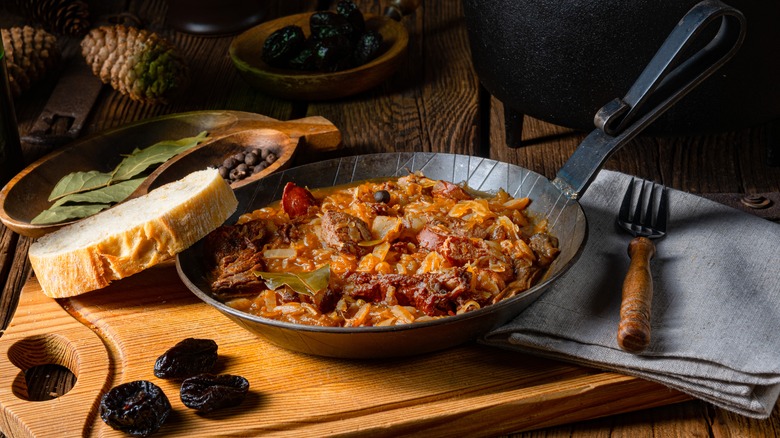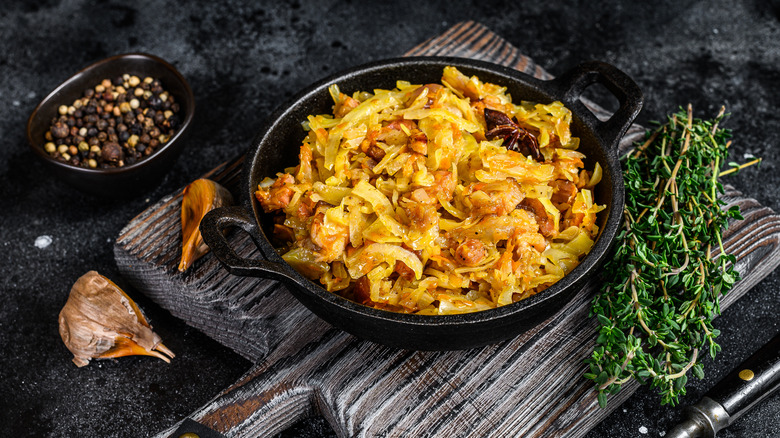Bigos: The Beloved Polish Stew You Should Know About
Soon after humans learned how to boil food, stew and soup making entered the culinary repertoire. The first renditions of this now globally ubiquitous food-prep technique were crafted with roasted grains mashed into a paste. By the Middle Ages, vegetable varieties cooked with cured meat became popular, a universal dish enjoyed by rich and poor, reports Yoair.
The preparation techniques became more nuanced too — dividing into soup and stew making. In a soup, the liquid is the main vessel for flavors and components. Alternatively, in a stew, ingredients are covered with just enough water to cook them, yielding a much denser result, via Pillsbury.
Combining vegetables and lots of cured meats through stewing, the Polish dish bigos checks all of the hearty, comforting boxes. Its centuries-old origins trace back to hunter's feasts — when a several-day-long stew was kept boiling, and each new hunted game was added to the pot. Nowadays, the dish is still prepared over several days and often served for New Year's with a chilled shot of vodka, per The New York Times. Let's unpack what this beloved stew is all about.
Bigos combines sauerkraut with a medley of cured and raw meats
Bigos's most critical component is sauerkraut, which along with mushrooms and raw white cabbage, are the consistent ingredients for the stew's base. It's best to buy the brined, not pickled kind, and if there is any vinegar left, wash it off, reports Simply Recipes.
This stew is packed with meats, several pounds worth, combined in various forms. Pork is more frequently utilized than beef, with pork shoulder especially common. But To bloom the stew's decadent flavor, you can use any meat such as beef, veal, chicken, duck, or goose, via World Food Story. And, since it's a leftover stew, it's encouraged to toss in any other meats on hand; the gamier, the better. Substitutions are encouraged, says Serious Eats.
Originally, Bigos featured a large variety of spices, and they still appear in renditions, like caraway, allspice, and bay leaves in this version by The New York Times Cooking. However, modern bigos tends to rely on the sauerkraut for flavor. Regional variations add some spins as well, like the Greater Polish version with tomato paste and marjoram and the Silesian with small dumplings, per The Food Hog. No matter what version is on the table, one thing is clear — this delicious and filling stew is perfect for a wintery meal.

